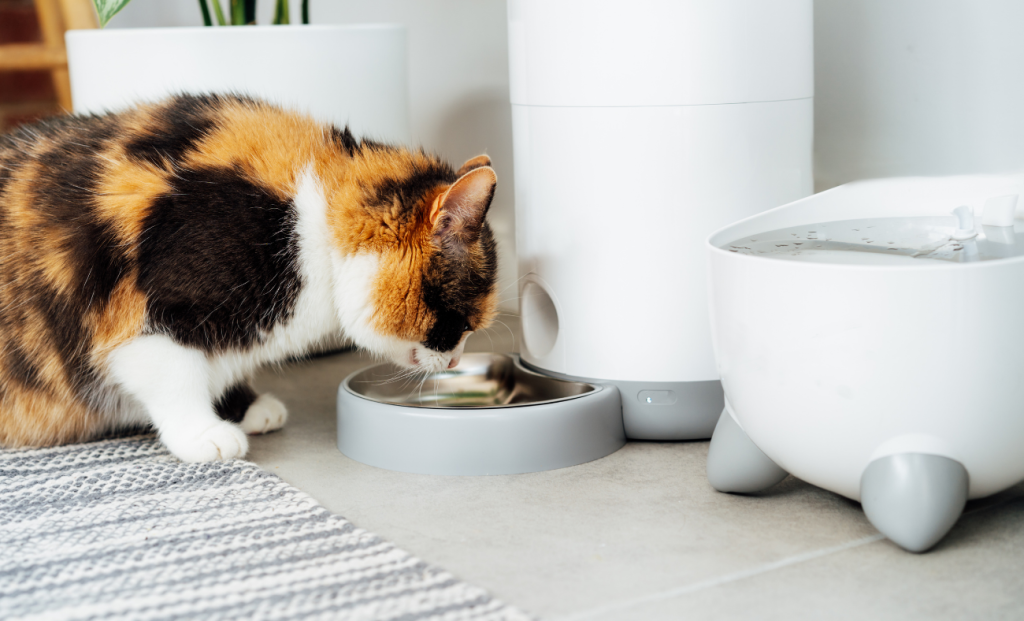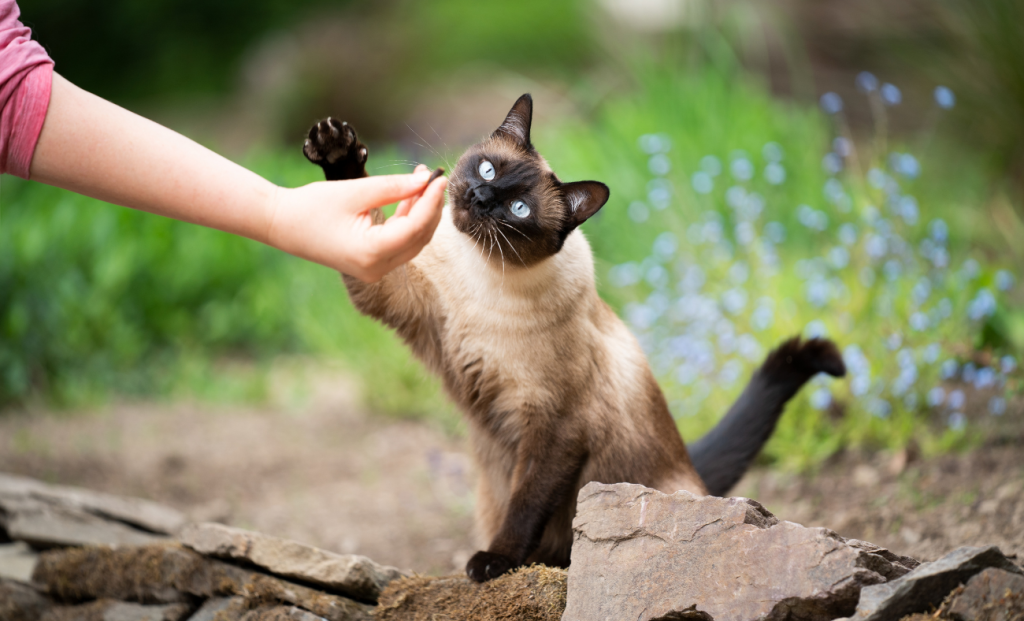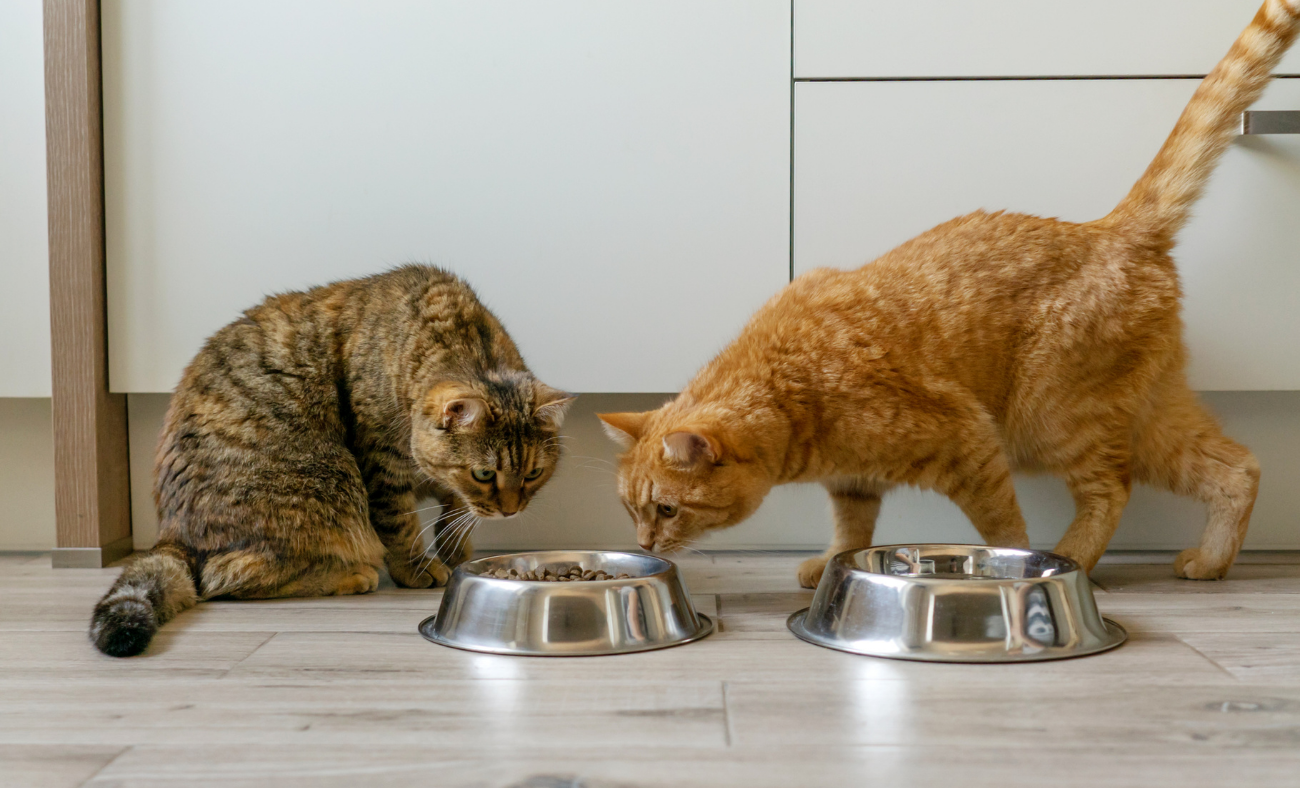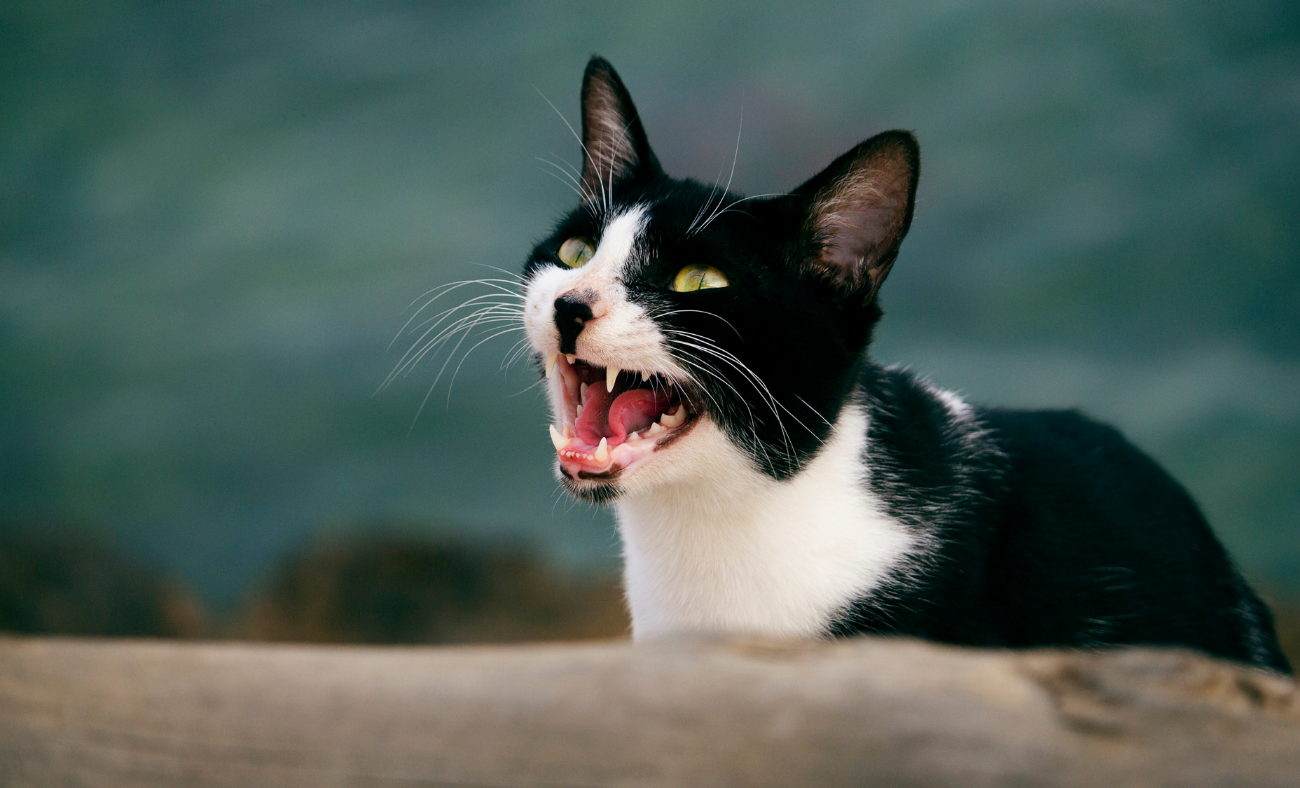Imagine watching your cat approach their food bowl with the caution of a bomb disposal expert. Something’s not right.
You’ve just filled their bowl with their favorite food. The same brand they’ve eaten happily for months. Yet there they stand, three feet away, studying the situation like they’re calculating complex equations.
They take a tentative step forward.
Stop. Look around. Take another step.
Then turn and walk away entirely.
Your first thought? “They’re just being picky.” Your second? “Maybe the food’s gone bad.” But what if I told you that your cat’s sudden food anxiety might be their way of communicating something far more serious about their emotional state?
Through my studies into feline anxiety, I’ve discovered something crucial. Appetite changes often serve as early warning systems for cat stress symptoms that most families miss entirely. When cats develop complicated relationships with food, they’re rarely being difficult about nutrition. They’re often managing overwhelming anxiety through the one resource they can control.
When Food Becomes Emotional Currency
Here’s what changes what we think we know about feeding problems.
Cats don’t just eat for nutrition. They eat for comfort, security, and emotional regulation in ways that make their feeding behavior a direct reflection of their psychological well-being (just like many humans).
Think about it. In secure environments, cats approach food with confidence. They eat at predictable rates. Feeding becomes a pleasant routine that provides both nutritional satisfaction and emotional comfort through familiar patterns and positive associations.
But when cats experience feline anxiety, everything changes. Their relationship with food becomes complicated by anxiety responses that affect everything from appetite timing to location preferences to eating speed and food choices.
This isn’t pickiness. It’s survival instinct.
Understanding feeding as emotional communication helps interpret appetite changes as valuable information about cats’ stress levels rather than simple preference shifts or medical issues requiring only nutritional intervention.
The biology behind stress-related appetite changes reveals why anxious cat behavior often manifests through feeding disruptions. Chronic anxiety affects digestive function. It alters hunger hormones. It changes cats’ perception of eating vulnerability in ways that create genuine feeding difficulties.
The Spectrum of Appetite Anxiety
Feeding-related cat anxiety symptoms appear in multiple forms. Some subtle. Some dramatic. Learning to recognize these patterns helps identify when feeding problems indicate stress rather than medical or nutritional issues.
Some cats respond to stress by eating too quickly. Wolfing down food like it’s a competition. This rushed eating behavior often indicates resource insecurity or environmental unpredictability that makes cats feel uncertain about future food access.
Other cats develop the opposite response. They become increasingly cautious about eating. They require specific environmental conditions before feeling safe enough to consume food. These cats often eat in hiding spots, refuse to eat during household activity, or require family members to be present for security.
Location anxiety around feeding creates another common pattern. Cats begin avoiding their usual feeding areas in favor of more private or secure spaces. This behavior suggests that cats’ usual feeding locations have begun feeling too vulnerable or unpredictable for comfortable eating.
Food preferences change dramatically too. Previously accepted foods might become unpalatable. Cats often develop specific requirements for eating comfort that seem excessive but actually represent a way for them to manage their anxiety.
Temperature matters. Texture matters. Even the sound of kibble hitting the bowl can become triggering and cause your cat to exhibit signs of stressed cat behavior.
Environmental Triggers That Turn Meals Into Stress Events
Understanding environmental factors that contribute to feeding anxiety reveals something shocking. Many seemingly innocent household changes can trigger stress responses around food and eating routines.
Feeding area placement affects cats’ eating comfort more than most families realize. Food bowls located near high-traffic areas? Instant stress. Near noisy appliances? Anxiety trigger. In spaces where cats can be surprised? Recipe for feeding problems.
These locations create ongoing stress that gradually erodes eating confidence. Day by day. Meal by meal. Until eating becomes an ordeal rather than pleasure.
Multi-cat household dynamics create even more complex feeding challenges. Competition for food access. Resource guarding behaviors. Simply the presence of other cats during vulnerable eating activities can make feeding feel threatening rather than pleasurable.
This often triggers anxiety in cats who feel unable to eat comfortably around other pets. They need space. They need security. They need to know they won’t be interrupted or threatened while eating.
Household routine changes affect feeding security in ways that seem disproportionate. Changes in feeding schedules, family activity patterns, or household noise levels during meal times can trigger eating anxiety that requires systematic environmental adjustments.
The social aspects matter too. Some cats feel safer eating when family members are present. Others prefer complete privacy during meals. Changes in family schedules or interaction patterns can disrupt established feeding security routines.

The Psychology Behind Food Refusal
Learning about feline feeding psychology reveals something important. Appetite problems often indicate broader anxiety issues requiring comprehensive intervention rather than simple dietary adjustments.
Eating represents vulnerability. Anxious cats struggle to manage this when their environment feels unpredictable.
Cats experiencing chronic stress often develop hypervigilance during feeding. Their nervous systems remain in alert states. This makes sustained focus on feeding feel impossible when environmental security feels compromised.
The territorial aspects of feeding add another layer of complexity. Feeding areas become psychologically significant locations that reflect cats’ overall territorial security and confidence.
Understanding how to calm a stressed cat often begins with addressing feeding environment factors that support eating security. Not just changing foods. Not just adjusting feeding schedules. Creating genuine safety around the vulnerable act of eating.
Physical Manifestations of Feeding Stress
Appetite anxiety creates genuine physical symptoms. These affect cats’ digestive health and overall well-being in ways that require attention even when the underlying causes are behavioral rather than medical.
Stress-related eating patterns can trigger digestive sensitivity. Nausea. Stomach upset that creates secondary feeding aversion. Cats who eat too quickly may experience vomiting that reinforces negative associations with feeding activities.
The physical tension cats carry during anxious eating affects their digestion and nutrient absorption. This potentially creates nutritional deficiencies despite adequate food availability. Chronic stress hormones interfere with normal digestive processes in ways that compound feeding difficulties.
Some cats develop physical avoidance behaviors around feeding. They approach food bowls cautiously. They eat in uncomfortable positions that allow environmental monitoring. They interrupt eating frequently to assess potential threats.
These aren’t character flaws. These are genuine health concerns that require environmental intervention to address underlying anxiety rather than medical treatment for symptoms that stem from emotional rather than organic causes.
Feeding Patterns That Signal Different Types of Stress
Different appetite disruption patterns communicate specific anxiety types. This helps identify appropriate intervention strategies for individual cats experiencing feeding difficulties.
Cats who eat rapidly and seem anxious about food availability? This often indicates resource insecurity or competitive stress. They need territorial anxiety addressed and resource distribution improved rather than dietary modification.
Selective eating patterns where cats become extremely particular about food textures, temperatures, or presentations? This typically suggests sensory sensitivity related to overall anxiety levels that make normal environmental stimuli feel overwhelming.
Location-dependent eating where cats will only consume food in specific areas or under particular circumstances? This usually indicates territorial or environmental security issues that require comprehensive household assessment and modification.
Timing-dependent appetite changes where cats refuse to eat during certain periods or household activities? This suggests environmental stressor identification and routine optimization to support feeding security.
Each pattern tells a story. Each pattern provides clues. Each pattern points toward specific solutions.
The Hidden Connection Between Eating and Territory
Understanding territorial aspects of feeding helps explain why appetite problems often correlate with other cat stress signs related to environmental security and resource access confidence.
In multi-cat households, feeding anxiety frequently reflects broader territorial dynamics. These affect cats’ overall security and confidence in shared living spaces. Addressing feeding problems may require comprehensive territorial management rather than isolated feeding area modifications.
Even single-cat households experience territorial feeding issues. This happens when cats feel uncertain about environmental predictability or resource security during times of household change or family stress.
Feeding areas represent important territorial resources. Cats use them to establish and maintain security boundaries within their living spaces. Disruptions to feeding territorial security often trigger broader anxiety responses that affect multiple aspects of cats’ behavior and well-being.
Creating Feeding Environments That Support Emotional Security
Successful resolution of feeding anxiety requires environmental modifications. These address cats’ psychological security needs during vulnerable eating activities rather than focusing exclusively on nutritional or dietary factors.
Multiple feeding station placement provides cats with options. This reduces territorial pressure and accessibility anxiety while ensuring that feeding never feels competitive or uncertain regardless of household activity levels.
Location matters. Privacy matters. Escape routes matter.
Feeding area optimization involves evaluating locations from cats’ security perspectives rather than human convenience factors. Quiet, easily accessible areas that provide privacy while allowing escape routes create environmental security that supports comfortable eating.
Environmental enrichment around feeding areas helps create positive associations with food locations. This provides mental stimulation that reduces overall anxiety levels affecting appetite and eating comfort.
Resource distribution strategies that ensure adequate space, accessibility, and security around feeding help prevent competition-related stress. This can trigger appetite anxiety in both single and multi-cat households.
The Role of Routine in Feeding Security
Feeding schedule consistency plays a crucial role. It supports cats’ eating confidence by providing predictability that reduces anxiety around resource access and availability.
Cats experiencing feeding anxiety often benefit from smaller, more frequent meals. This reduces pressure around individual feeding sessions while maintaining adequate nutrition and eating opportunities throughout the day.
The timing of feeding relative to household activities affects cats’ eating comfort significantly. Scheduling meals during quieter periods helps anxious cats feel secure enough to eat without environmental monitoring that disrupts appetite and digestion.
Routine flexibility around feeding helps accommodate cats’ individual anxiety management needs. This maintains enough predictability to support eating security and appetite recovery over time.
Medical Considerations in Appetite Changes
Before addressing appetite problems as anxiety-related, rule out medical conditions first. Dental problems, digestive issues, kidney disease, and other health conditions can cause appetite changes that may coincide with but aren’t caused by environmental stress factors.
The timeline and pattern of appetite changes help distinguish between medical and behavioral causes. Medical issues typically produce consistent symptoms that don’t correlate with environmental factors. Anxiety-related feeding problems often fluctuate based on household stress levels and environmental changes.
Physical symptoms during eating warrant immediate veterinary evaluation. Difficulty chewing. Swallowing problems. Obvious discomfort. These require medical attention regardless of suspected behavioral factors contributing to appetite changes.
Building Long-Term Feeding Confidence
Successful appetite anxiety resolution requires patience. It requires systematic environmental support that addresses underlying stress factors while rebuilding positive associations with feeding activities and food locations.
Environmental modifications that reduce overall household stress levels often improve feeding behavior. When cats feel more secure in their environment generally, feeding anxiety typically decreases naturally.
Individual personality factors influence recovery timelines and intervention strategies needed for appetite anxiety resolution. Some cats show rapid improvement with environmental changes. Others require extended support before eating confidence returns completely.
Understanding each cat’s specific anxiety triggers allows for customized feeding environment modifications. This addresses individual factors contributing to appetite problems rather than applying generic solutions that may not address underlying stress sources.

Monitoring Recovery and Maintaining Feeding Health
Appetite recovery often involves gradual improvement. This requires consistent environmental support and patience rather than immediate return to normal eating patterns and preferences.
Track feeding patterns during recovery. This provides valuable information about environmental factors that support or undermine eating confidence. Note correlations between household activities and feeding success. This helps identify ongoing triggers requiring attention.
The quality of eating interactions becomes as important as quantity consumed during appetite anxiety recovery. Relaxed, confident eating behavior indicates genuine progress more accurately than simple food consumption measurements.
Preventing feeding anxiety recurrence requires maintaining environmental modifications. These support cats’ eating security needs even after appetite problems resolve. Cats who’ve experienced feline anxiety associated with feeding may remain sensitive to environmental changes that previously triggered eating difficulties.
Understanding Food as Communication
When cats develop complicated relationships with food, they’re communicating. They’re telling us about environmental factors that make them feel unsafe, overwhelmed, or uncertain about resource security and territorial stability.
The specific feeding behaviors cats develop provide valuable information. Information about their anxiety triggers and security needs. Cats seeking isolated eating locations may be responding to different stressors than cats who refuse to eat unless family members are present.
Location choices for eating communicate important information about household factors that affect cats’ security perceptions. Understanding these communication patterns helps address underlying environmental issues rather than managing feeding symptoms in isolation.
Creating Lasting Feeding Wellness
Successful feeding anxiety intervention focuses on creating environmental security. This supports natural eating behaviors rather than forcing appetite recovery through dietary manipulation or feeding schedule pressure.
Understanding feeding behavior as an anxiety communication helps develop comprehensive environmental modifications. These address cats’ psychological needs around eating vulnerability and resource security.
Every cat deserves to experience eating as a pleasant, secure activity. One that provides both nutritional satisfaction and emotional comfort rather than a source of ongoing anxiety that requires constant vigilance and stress management.
When feeding becomes a battleground for cat stress, the solution isn’t found in the food bowl. It’s found in creating environmental security that transforms mealtimes from anxiety management back into simple, joyful nourishment. Ready to transform your cat’s relationship with food from anxiety-driven difficulty to peaceful mealtime satisfaction?
Download our FREE Cat Stress Assessment Checklist: The Essential 12 Hidden Signals to systematically assess environmental factors affecting your cat’s feeding comfort and develop a personalized plan for building their eating confidence through comprehensive environmental support and targeted cat stress relief strategies.

